Listrim House
Houses within 5km of this house
Displaying 17 houses.
Houses within 5km of Listrim House
Displaying 17 houses.
| House name | Description | |
|---|---|---|
| Ballyroe Lodge | Sir Edward Denny was leasing this property to Pierce Chute at the time of Griffith's Valuation when it was valued at £17 15s. Bary writes that it was built by Pierce Chute, possibly in 1836, according to O'Donovan. The Chutes continued in residence until the late nineteenth century after which it had a succession of owners. It now forms part of the Ballyroe Heights Hotel complex. |
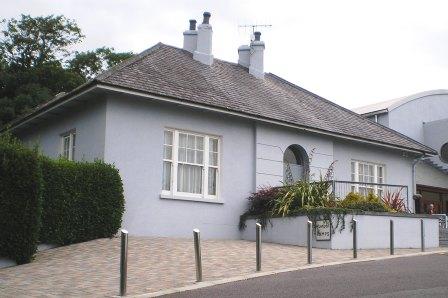
|
| Barrow House | Sir Edward Denny was leasing Barrow House to John Collis at the time of Griffith's Valuation when it was valued at £20 10s. In 1837 Lewis mentions Barra [sic] as the seat of T. Collis. In the 1830s, the Ordnance Survey Name Books indicate it was the residence of John Collis, having been built about two centuries previously. Leet noted it as the seat of John Collis in 1814. Bary states that the house was built by a William Collis, a Cromwellian officer, and continued to be associated with the Collis family until latter half of the nineteenth century. In the 1990s it was a restaurant and guesthouse but has now reverted to private ownership. |
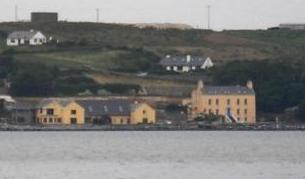
|
| Lisadale Lodge | John Busteed was leasing Lisadale Lodge from William Howard at the time of Griffith's Valuation, when it was valued at £6 10s. The Ordnance Survey Name Books record it as the residence of William Howard, by whom it was supposedly built, in 1836. Bary writes that the house may have been a hunting lodge. It is now ruinous. | |
| Ballygarran House | Sir Edward Denny was the lessor of Ballygarran at the time of Griffith's Valuation, when the property, valued at £9 10s, was vacant. In the 1830s, the Ordnance Survey Field Name Books mention Ballygarran House as the residence of William Hilliard by whose family it had been built in the eighteenth century. It is described as " an oblong low thatched house". Bary notes that it was a house frequently associated with the Hilliard and later the Fitzmaurice families. It was demolished in the mid-twentieth century. | |
| Lassinah | John Day Stokes was leasing this property from Sir Edward Denny at the time of Griffith's Valuation, when it was valued at £20 10s. Bary states that Major Stokes retired here from his Indian Army post and renovated the house where he lived until 1862. It remained in the Stokes family until the end of the nineteenth century and was recorded by Slater as the seat of Maj. Oliver R. Stokes in 1894. It is still extant but ruined. | |
| Kent Lodge | Richard O'Connell was leasing this property from the Denny estate at the time of Griffith's Valuation, when it was valued at £10 10s. Bary states that this house was attached to an earlier building known as O'Connell's Cottage where Rickard O'Connell lived but that Kent Lodge was built by William Collis. The house, which is still extant, remained in the Collis family until the early twentieth century. |
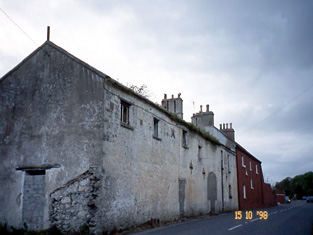
|
| Church Hill House | At the time of Griffith's Valuation, Rev. Henry Denny was leasing Church Hill from Sir Edward Denny when it was valued at £27. According to Bary the house was in the hands of the Denny family for much of the eighteenth and nineteenth centuries until it passed to the Neligans, possibly in the 1880s. In 1906 it was owned by William Neligan and valued at £27. It is still extant and occupied. |

|
| Plover Hill House | Sir Edward Denny was leasing this property to George Gunn at the time of Griffith's Valuaton, when it was valued at £16 5s. Lewis records it as the seat of George Gun in 1837. Bary states that the house was built in the early nineteenth century by Barry-William Gun, whose mother was Arabella Denny. The Gunn family continued to own the property until the 1880s. Buildings still exist at the site. | |
| Frogmore | John McCartie or McCarthy was leasing this property from Sir Edward Denny at the time of Griffith's Valuation, when it was valued at £16. Lewis records Frogmore Lodge as the seat of Reverend Barry Denny in 1837.The Ordnance Survey Name Books reported that it was built by him in 1828 at a cost of £600 and was lived in, in 1840, by Mrs. Townsend Gunn. It is still extant. | |
| Curragh | William John Neligan was leasing this property from the Denny estate at the time of Griffith's Valuation, when it was valued at £8 10s. Bary indicates that the house has always been occupied by merchant families from Tralee. It is still extant. | |
| Ardfert Abbey | William T. Crosbie was in possession of Ardfert Abbey at the time of Griffith's Valuation, when it was valued at £62. Lewis, writing in 1837 and Leet, in 1814, note the house as the residence of the Earl of Glandore.It was the home of Lt-Col. John Darnley Talbot Crosbie in 1894. In 1906 it was the property of L.T Crosbie and valued at £66. Bary writes that the original house built here by the Crosbies was destroyed in the 1641 rebellion and another erected in the early 18th century. The Ordnance Survey Name Books quote the inscription relating to the original house from 1635. It remained the residence of the family until the late nineteenth century when it passed to John Talbot, whose son, William Talbot-Crosbie, then inherited. The house was burnt during the Civil War in 1922 and only the elaborate entrance gate remains.. |
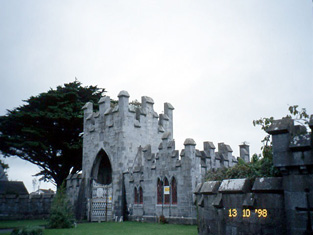
|
| Sackville House | William T. Crosbie was leasing this property to Sarah Heck at the time of Griffith's Valuation, when it was valued at £22 10s. Lewis records it as the property of the Crosbie family but resided in by Rev. R. Maunsell in 1837. Leet, in 1814, noted Sackville as the residence of John Saunders. In 1786, Wilson mentions Sackville " a very neat house, newly erected" as the seat of Rev. Thomas Graves, Dean of Ardfert. In 1906 it was the property of L.T. Crosbie and valued at £25. Bary states that Sackville was built by Thomas Graves, dean of Ardfert, in 1788, as there was no Glebe house there. It was named for Diana Sackville, wife of John Crosbie, second Earl of Glandore. It was leased by the Crosbies or lived in by one of the family for much of the nineteenth century. It was sold in the twentieth century and demolished in the 1950s. | |
| Tubrid House | George Gunn was leasing this property to Henry Hilliard at the time of Griffith's Valuation, when it was valued at £22 10s. Lewis recorded Tubrid as the seat of J. O'Connell.The Ordnance Survey Name Books indicate that this townland was owned by John O'Connell of Grenagh, Killarney and that John Sullivan of Tubrid was his agent in the 1830s. The house was occupied by Capt. Henry Hilliard at that time. In 1814, Leet noted the house as the seat of Townsend Gunn. Bary states that Tubrid House was built by the Crosbie family in the mid-eighteenth century and resided in by several generations of that family. The late eighteenth century owner, John G. Crosbie, was involved in a duel in which Sir Barry Denny was killed. A year later Crosbie himself died in mysterious circumstances. The house afterwards was owned by the Gunn and Hewson families. It is no longer extant. | |
| Banna House | Robert E. Stokes was leasing this property from the Earl of Listowel's estate at the time of Griffith's Valuation, when it was valued at £11. Bary writes that it was built by Oliver Stokes in 1815. It was demolished many years ago. | |
| Fenit House or Fenit Lodge | Though this house was mostly associated with the Hurley family, at the time of Griffith's Valuation, it was in the possession of a Miss Locke, when it was valued at £20. It was being leased by John Murray. In 1906 it was owned by John C. Hurley and valued at £33. Bary notes that it later came into the Fuller family through marriage. It was sold in the 1970s but is still extant and occupied. |
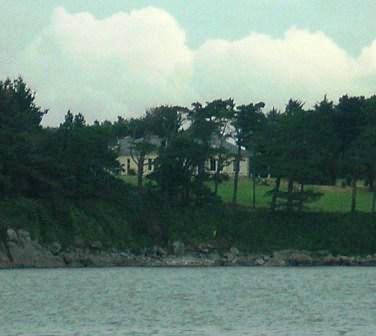
|
| Oyster Hall | Edward Denny was leasing this property to William J. Neligan at the time of Griffith's Valuation, when it was valued at £18 Lewis refers to it as the seat of Barry Collins while Oyster Lodge was the residence of Mr.Neligan in 1837. IIn the 1830s, the Ordnance Survey Field Name Books mention Oyster Hall as the seat of Daniel Supple but originally built by George Rowan in 1804. In 1814, Leet refers to Oyster Hall as the residence of George Rowan. Bary states that Oyster Hall was orginally built by the Rowans but was associated with the Neligans by the middle of the nineteenth century. It is no longer extant. | |
| Abbeylands | In 1906 L.T, Crosbie owned a property at Skrillagh, valued at £17. This townland also belonged to the Crosbie estate at the time of Griffith's Valuation, when it was let to the McElligott family. Bary states that the house, Abbeylands, was built in the 1870s as a residence for George Trench, agent to the Crosbie estate. In 1901 it was occupied by Ross Palmer and his family, JP for county Kerry and creamery owner. It was burnt in 1921 but restored later in the twentieth century and is now an ecumenical retreat centre. |

